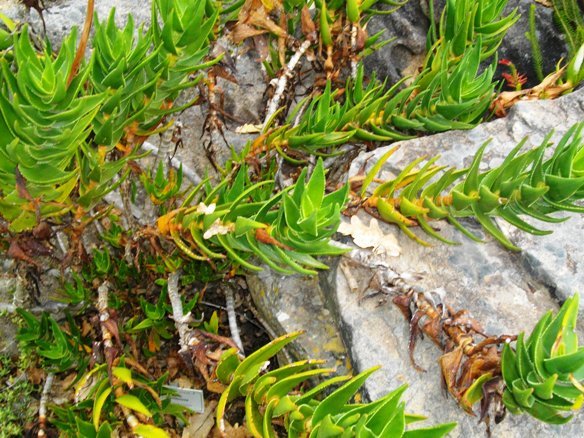Aloiampelos commixta shrub

Author: Ivan Lätti
Photographer: Ivan Lätti
Aloiampelos commixta grows into a sprawling, irregularly and numerously branched shrubby bush. Much of the branching occurs at or below ground level. Lower leaves drop off as the plant develops, leaving only a concentration of leaves at the tips of branches with some dead ones lower down and a smooth, whitish stem at the base. While new leaves may be compactly stacked, the remaining lower ones become spaced, revealing the green striped internodes.
This is a Western Cape fynbos plant. One finds it high up on Cape Peninsula and other close-lying mountains (although some sources restrict the domain to the Peninsula itself). Confirmation of its existence in wider domain would be a welcome comment from the hikers.
It grows in acid soil on rocky places where its slender, bamboo-like stems will ramble. This plant enjoys high rainfall and low temperatures up there, but receives no frost. This plant does not perform well when planted outside of this particular habitat. It is wise to garden with those species that readily adapt to the micro-habitat of the living area (Jeppe, 1969).
A. commixta, being endemic to a very small natural distribution area that is frequented by a large local and tourist population, is listed as vulnerable on the IUCN Red Data List of 2009.
Although many people have been won over to the protective and conservatory component of the population, there are just too many still without the awareness. The Cape has been called the “biodiversity mega-disaster capital of the world” (Holmes, 2008 in www.plantzafrica.com).

